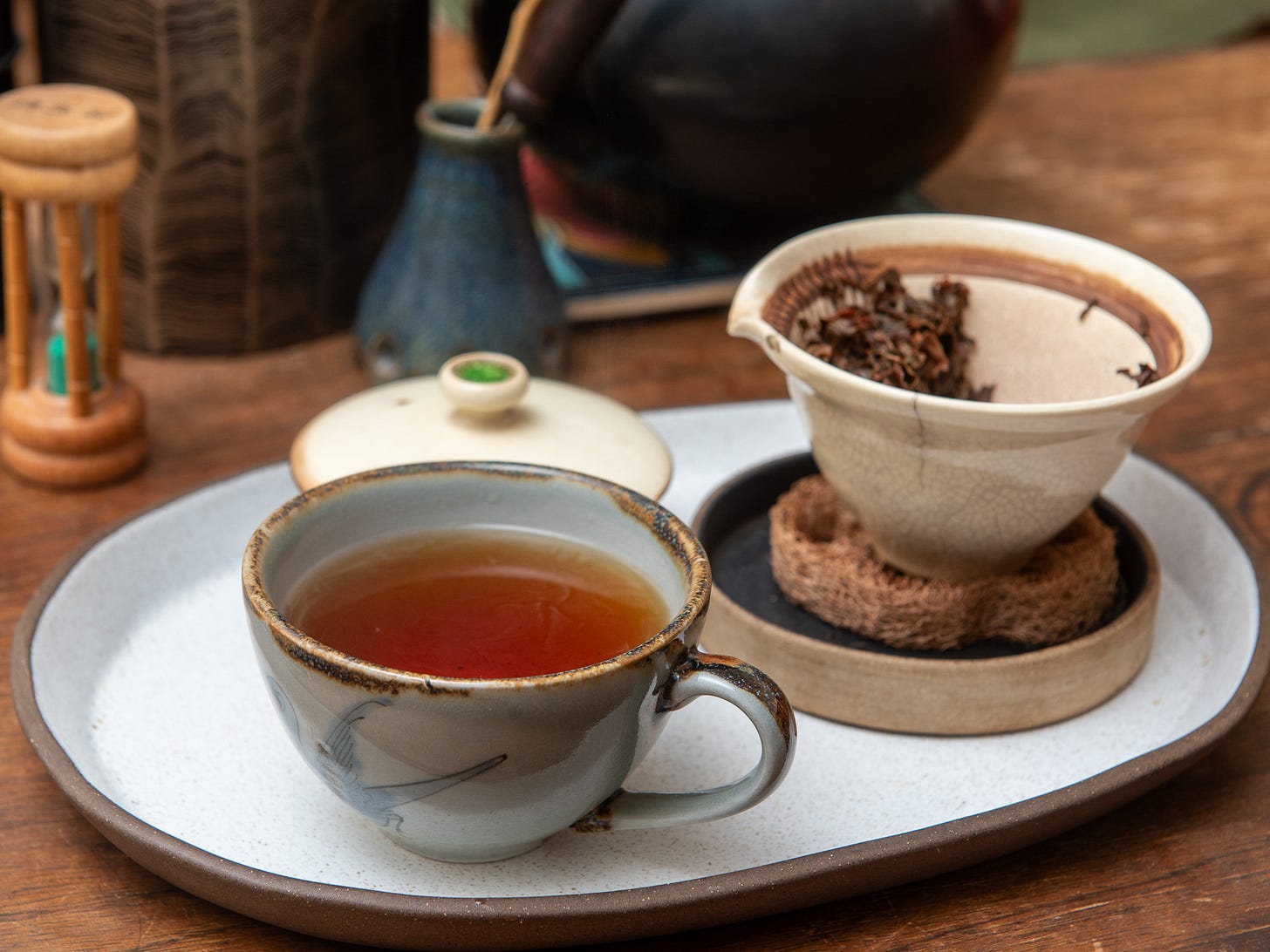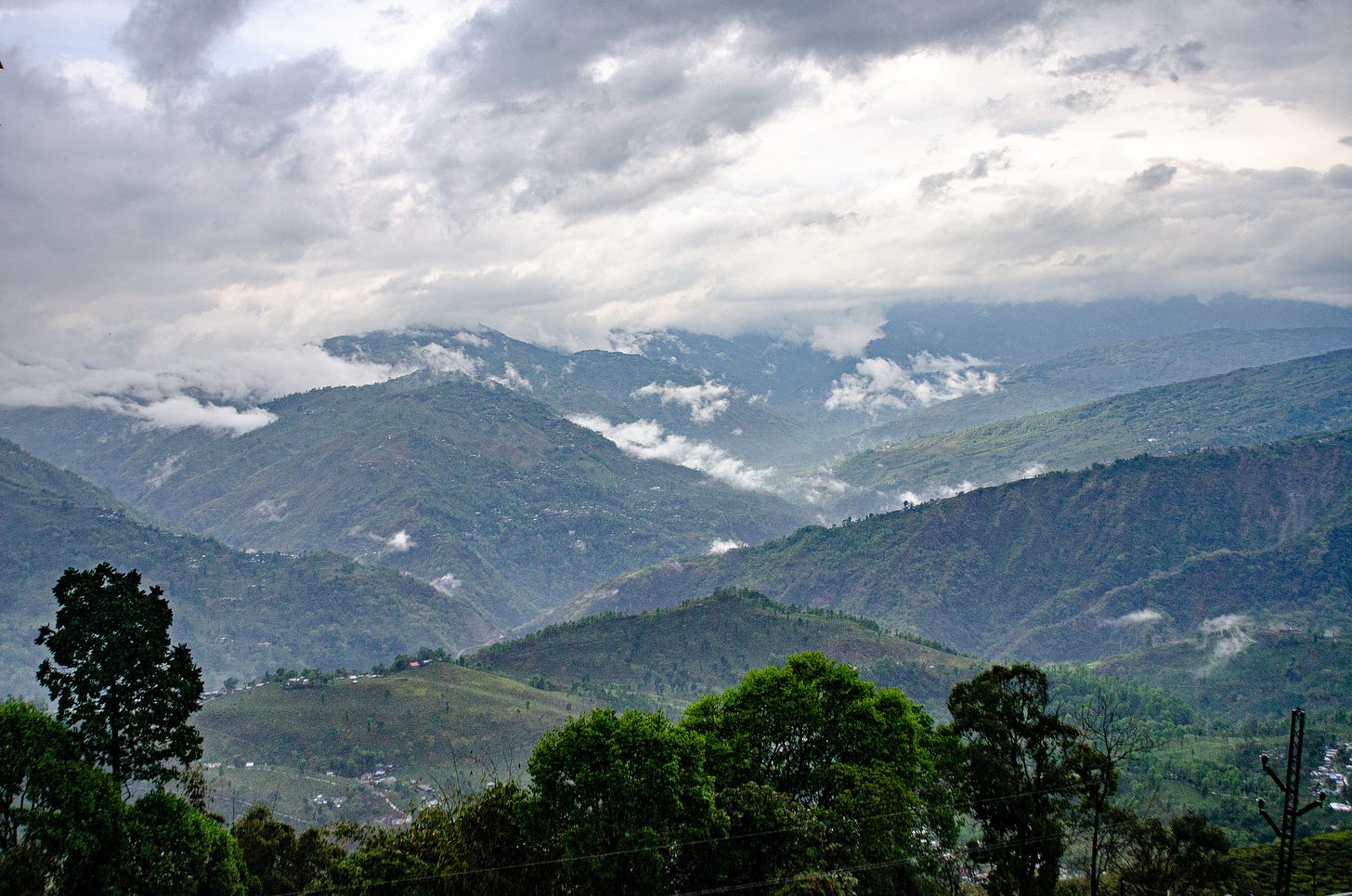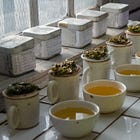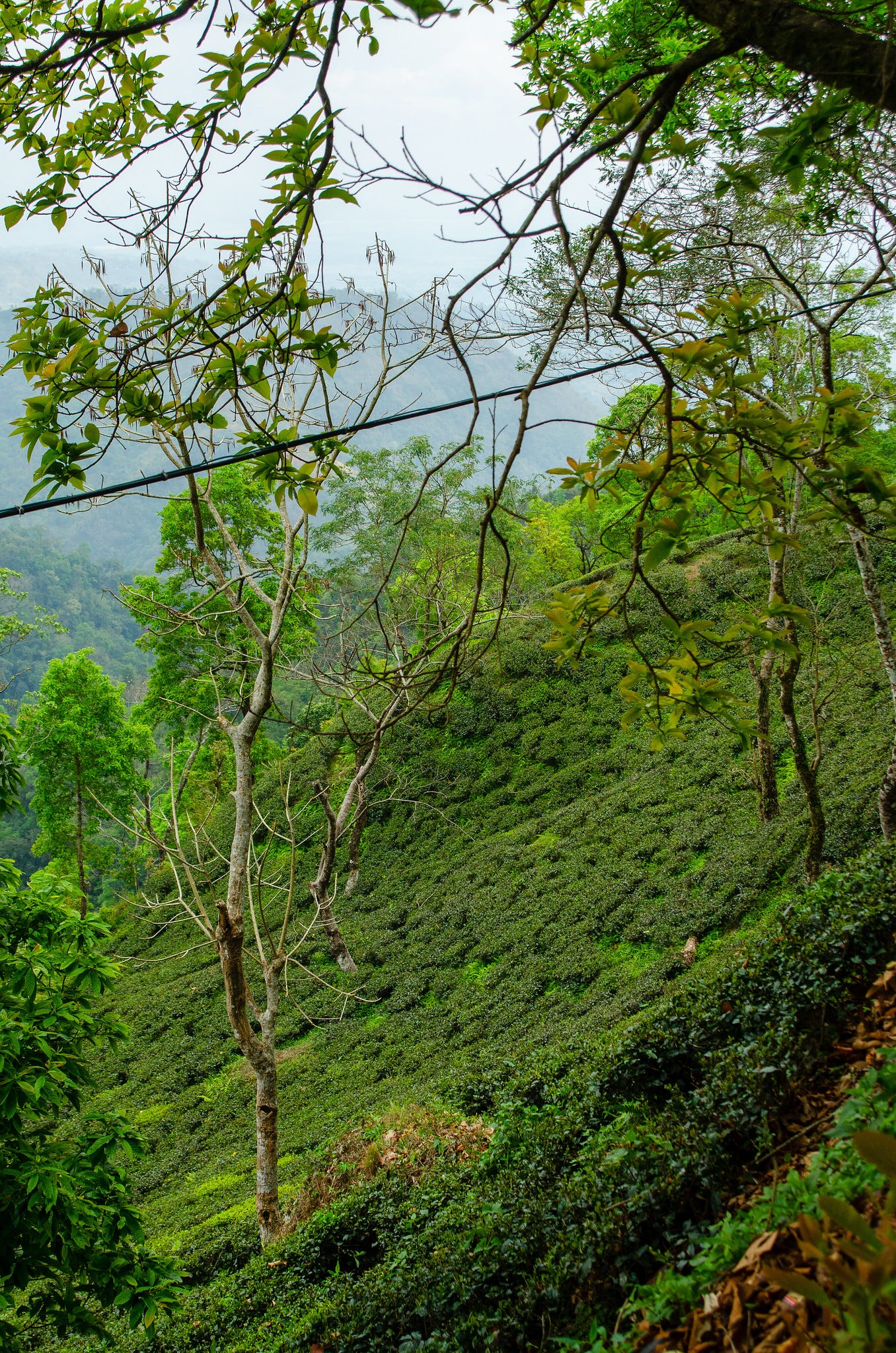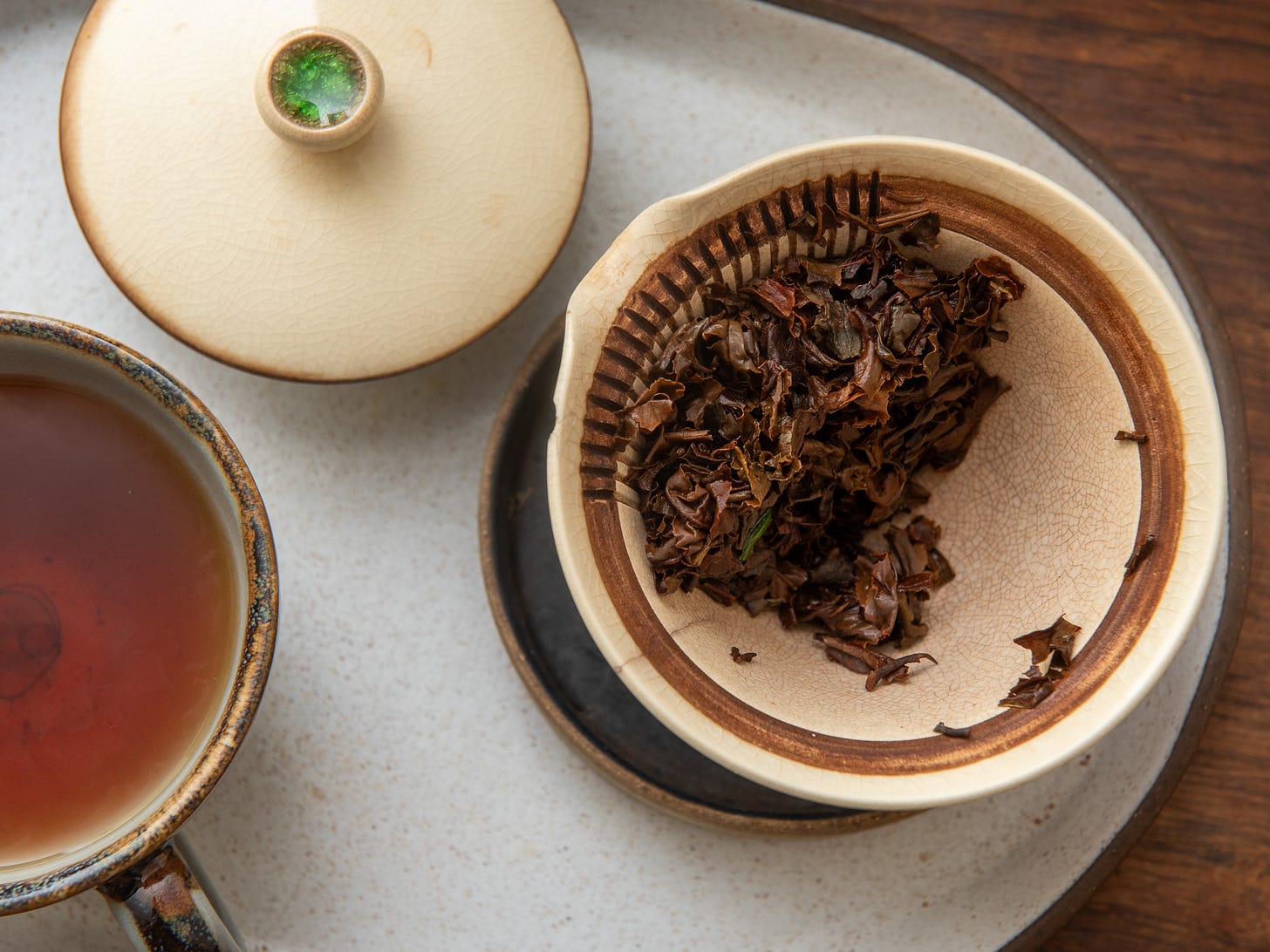There are two children of Darjeeling that get all the attention: the light and fragrant first flush, picked in early spring, and the darker, more coppery second flush produced around May and June. New tea can take a few months to arrive on foreign shores, so 2025’s second flush harvest has been slowly populating American tea rooms. Now is an ideal time to drink some.
When I talk about drinking tea seasonally, I want a brew that helps me cultivate a vibe. Fall has finally arrived in New York City. The locust trees have been dropping their orange leaves on the black rain-soaked asphalt, creating an appropriately Halloween atmosphere that has me in the mood for dark tea and wool blankets. Part of the promise of drinking tea is to slow down and see what’s in front of you. So I’ve been sipping lots of second flush this week, appreciating its prismatic flavors against the autumn chill.
Second flush tastes like toffee, allspice, squash, and wintergreen. It has a measured astringency that can tug on the tongue and ring through your teeth like porcelain knocking porcelain. When it’s good, it leaves a thick, fundamental tea-ness in the mouth that builds with each sip and remains when you’ve drained your cup. The complexity reminds me of wine, which is a tired trope used to push the powers of tea on those who couldn’t care less, but here the comparison is apt. There are grippy textures and spicy aromatics in second flush that act on the palate like a well structured red.
I generally prefer the darker second flush to the less oxidized first flush. This year I got to try some first flush from Herbs & Kettles that was more heavily oxidized like a second flush tea. It was lovely to drink: round, fragrant, and fruity. Though it didn’t have the presence and briskness that I enjoy in second flush teas made from heartier summer growth. The experience reminded me of something Mississippi tea maker Thomas Steinwinder mentioned to me, how he had trouble getting ripe oxidation from spring harvest leaf as opposed to later in the season. If spring tea tastes like potential, summer tea can taste like self assurance.
One quality that Darjeeling first and second flush teas share is that each batch is unique, even from day to day at the same garden. Darjeeling’s winding hills create diverse microclimates, complicated further by varied plots of tea that may represent different cultivars and tree ages. Changing weather alters how long fresh leaves are withered or oxidized, introducing more confounding factors. The bad news is that even if you’ve enjoyed a tea from one garden in the past, you may not like a batch from this year’s harvest. The good news is that every batch has the power to surprise you, and a good tea seller allows each one to stand on its own.
Here are some signs to look for when selecting a second flush for yourself. There should be a production year and a specific garden listed as the producer, or it’s likely the seller is blending multiple batches that may obscure the leaves’ individual characters. Some sellers will include codes with the prefix DJ followed by a number, indicating which exact batch the tea is from. Batch numbers increase as the season progresses, so the code is a rough reference for how far along the season a given batch was picked. It’s nice to see notes on elevation and whether the tea is clonal (made from specific cultivars) or china bush (the local lingo for seed-grown plants with mixed genetics). I often prefer Darjeeling tea from seed-grown trees, but not always. This information is really more of a shibboleth than a guide for my purchasing; I like to know that the tea seller knows—and cares enough to share such details with weirdos who obsess over such things.
This year American buyers can expect higher prices due to the Trump administration’s tariffs. If you’re looking for deals, consider waiting for Black Friday sales or see if there’s any discounted 2024 second flush lying around. Unlike Darjeeling first flush, second flush teas hold up well over time. A one- or two-year-old batch should still have plenty of vibrancy and some batches can even age for longer periods.
I find that each batch of second flush needs to be dialed in to find the right dosage and steeping time. Where Chinese and Japanese black teas veer toward smooth and sweet flavors, Darjeeling second flush can taste surprisingly savory and volatile. Just a few extra seconds can mean the difference between pleasant zip and toe-curling bitterness. So don’t feel discouraged if your first cup of second flush doesn’t transport you anywhere. Give the leaves a second (and third) steep and adjust your brew time accordingly.
Darjeeling is a specialist tea and it pays to buy it from a specialist vendor. Below, paid subscribers can check out my recommendations for the 2025 season.
Where to find standout second flush
Keep reading with a 7-day free trial
Subscribe to Leafhopper to keep reading this post and get 7 days of free access to the full post archives.



